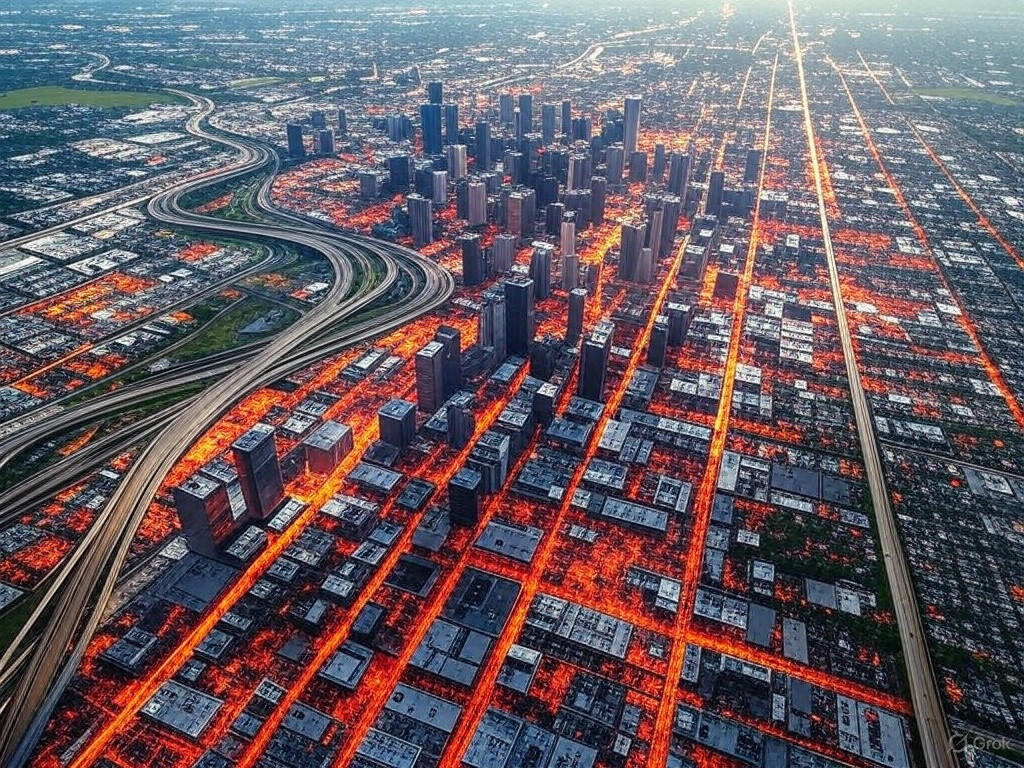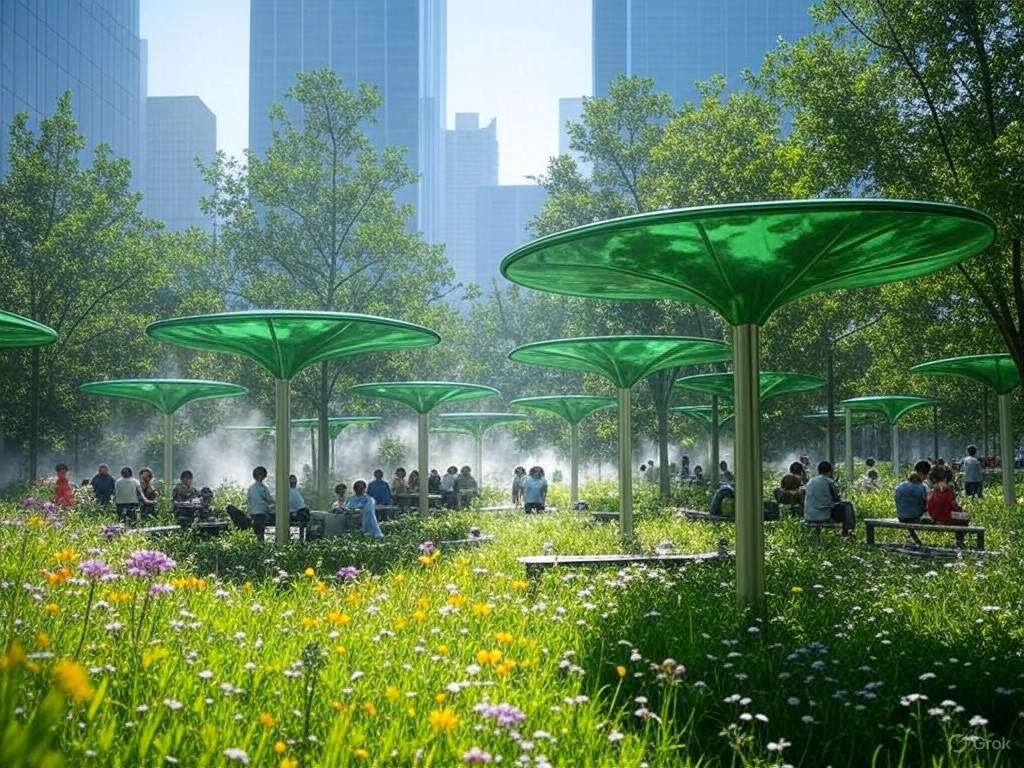Urban Heat Island Research: Cooling Cities
In the bustling heart of our modern metropolises, where concrete jungles stretch toward the sky, a silent adversary lurks: urban heat. As populations swell and skylines evolve, the phenomenon of urban heat islands—where city centers bake under layers of asphalt and steel—demands our attention. This isn't merely a matter of discomfort; it's a pressing issue tied to climate resilience, public health, and economic productivity. Drawing from decades of research, it's clear that innovative, market-driven approaches can lead the way in cooling our cities without overburdening government resources or stifling individual enterprise. As someone who values practical solutions rooted in tradition and free-market principles, I urge us to embrace this challenge with the same ingenuity that built these great urban centers in the first place.
Urban heat, exacerbated by climate patterns and human activity, transforms cities into ovens, with temperatures soaring several degrees above surrounding rural areas. This isn't new—research has long documented how impervious surfaces like roads and buildings absorb and radiate heat, creating microclimates that strain energy grids and endanger residents. Yet, in an era where environmental stewardship aligns with conservative values of resourcefulness and community self-reliance, the focus must shift from expansive government mandates to empowering private innovation. After all, it's the enterprising spirit of inventors and local businesses that has historically driven progress, from the industrial revolution to today's tech advancements.
The Science of Urban Heat Islands: A Balanced Analysis
To understand urban heat, we must first delve into the research that illuminates its causes and consequences. Urban heat islands occur when cities, with their dense concentrations of buildings, vehicles, and infrastructure, trap heat more effectively than natural landscapes. According to a study from IEEE on thermal dynamics in metropolitan areas, surface temperatures in cities like New York or Los Angeles can be 10–15 degrees Fahrenheit higher than in nearby suburbs, amplifying the effects of broader climate trends. This research underscores how urban heat isn't just a byproduct of global warming but a localized challenge intensified by poor urban planning.
From a center-right perspective, the key lies in recognizing that while climate research highlights real risks—such as increased heat-related illnesses and higher energy demands—it also reveals opportunities for market-based solutions. Government intervention should be limited to setting clear, efficient standards rather than dictating outcomes. For instance, instead of blanket regulations that stifle growth, policies could incentivize private developers to integrate cooling technologies through tax credits or streamlined permitting. This approach honors traditional values of personal responsibility and local initiative, allowing communities to adapt in ways that suit their unique needs.
What makes this issue compelling is its intersection with everyday life. In cities across the globe, urban heat contributes to environmental degradation, straining water resources and air quality. A Wall Street Journal analysis points out that without intervention, these conditions could erode economic productivity, with workers in overheated environments experiencing reduced efficiency and businesses facing higher operational costs. Yet, the narrative-driven research from institutions like the Urban Land Institute emphasizes that solutions don't require a top-down overhaul. By fostering competition in the green technology sector, we can encourage affordable innovations that cool cities without the pitfalls of overregulation.

This satellite image captures the vivid temperature contrasts between downtown cores and outlying green spaces, illustrating the urgent need for targeted urban cooling strategies.
Evidence from Research: Strategies for Global Cooling
The evidence supporting effective strategies to mitigate urban heat is robust and multifaceted. Recent research highlights practical, scalable solutions that prioritize free-market dynamics over centralized control. For example, studies on green infrastructure—such as rooftop gardens and permeable pavements—demonstrate how these measures can reduce ambient temperatures by up to 5 degrees Celsius in high-heat zones. A report from the Environmental Protection Agency's archives, while government-sponsored, provides non-partisan data showing that cities like Singapore have successfully lowered urban heat through public-private partnerships that leverage private investment in urban greening.
One particularly promising avenue is the role of technology in cooling cities. Innovations in reflective coatings and smart materials, driven by competitive markets, offer cost-effective ways to combat heat without massive public expenditure. As detailed in a blog from the American Society of Civil Engineers, pilot programs in Phoenix and Chicago have shown that applying cool roofs—surfaces designed to reflect sunlight—can decrease energy use for air conditioning by 10-15%. This not only benefits the environment but also aligns with traditional values of thrift and ingenuity, proving that individuals and businesses can lead the charge.
To balance this, it's worth noting potential challenges, such as the upfront costs of implementation, which could disproportionately affect smaller communities. However, market forces can address this through venture capital and entrepreneurial ventures, rather than subsidies that distort competition. For instance, startups specializing in urban heat solutions have seen a surge in funding, as reported in a Forbes article on climate tech investments. By encouraging such growth, we foster an ecosystem where innovation thrives, reducing reliance on government programs and empowering citizens to take ownership of their surroundings.
In practice, global cities are already adopting these strategies with impressive results. London's expansion of urban parks and Tokyo's promotion of energy-efficient building materials serve as case studies, blending research with real-world application. These efforts underscore that cooling cities isn't about ideological battles but about pragmatic, evidence-based actions that respect fiscal responsibility and free enterprise.

Engineers test advanced green infrastructure in a city park, showcasing how natural elements can integrate with modern technology to combat urban heat.
A Path Forward: Nurturing Resilience Through Market Wisdom
As we conclude, it's evident that the path to cooler cities lies in harnessing the power of research and free-market principles to address urban heat. We've seen how climate science provides the foundation for understanding this issue, while strategies like green infrastructure and technological innovations offer viable, balanced solutions. By limiting government involvement to supportive roles—such as funding research or providing incentives—we can avoid the pitfalls of overreach and preserve the dynamism that defines American enterprise.
In a world where tradition and progress intersect, let us remember that true environmental stewardship comes from within our communities. It's not about grand gestures or divisive rhetoric but about rolling up our sleeves, as generations before us have done, to build a more resilient future. With the right mix of ingenuity and market-driven spirit, we can cool our cities, protect our environment, and ensure that urban life remains a beacon of opportunity for all.
This editorial draws on the timeless wisdom of self-reliance, urging us to act with clarity and purpose. After all, in the face of urban heat, it's not the size of the government that matters, but the strength of our collective resolve.

